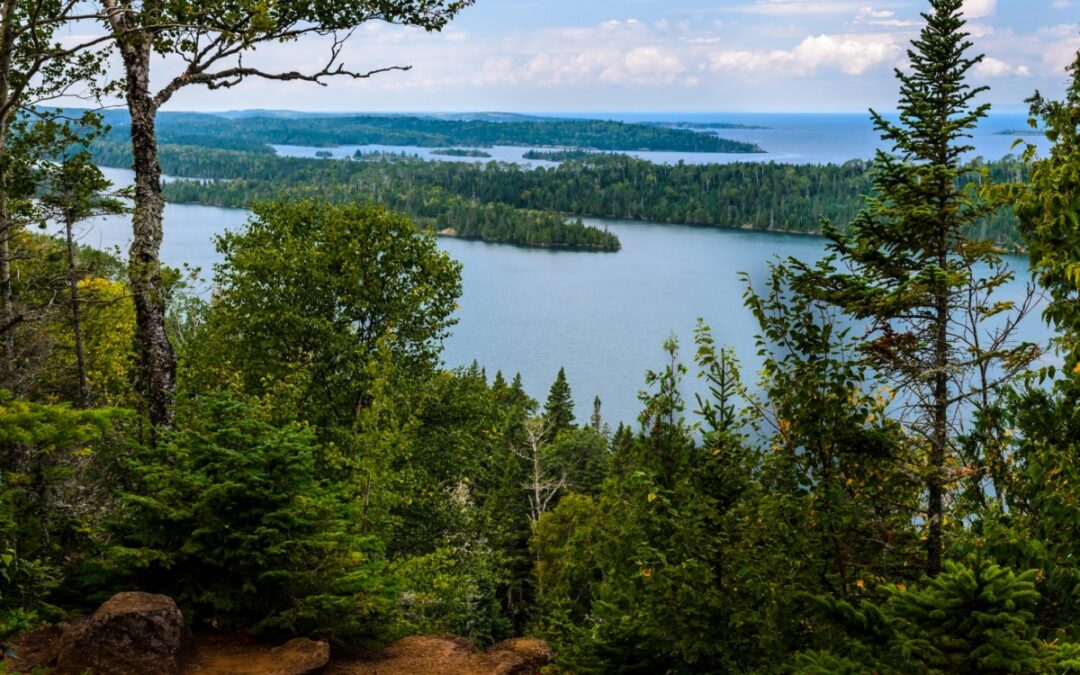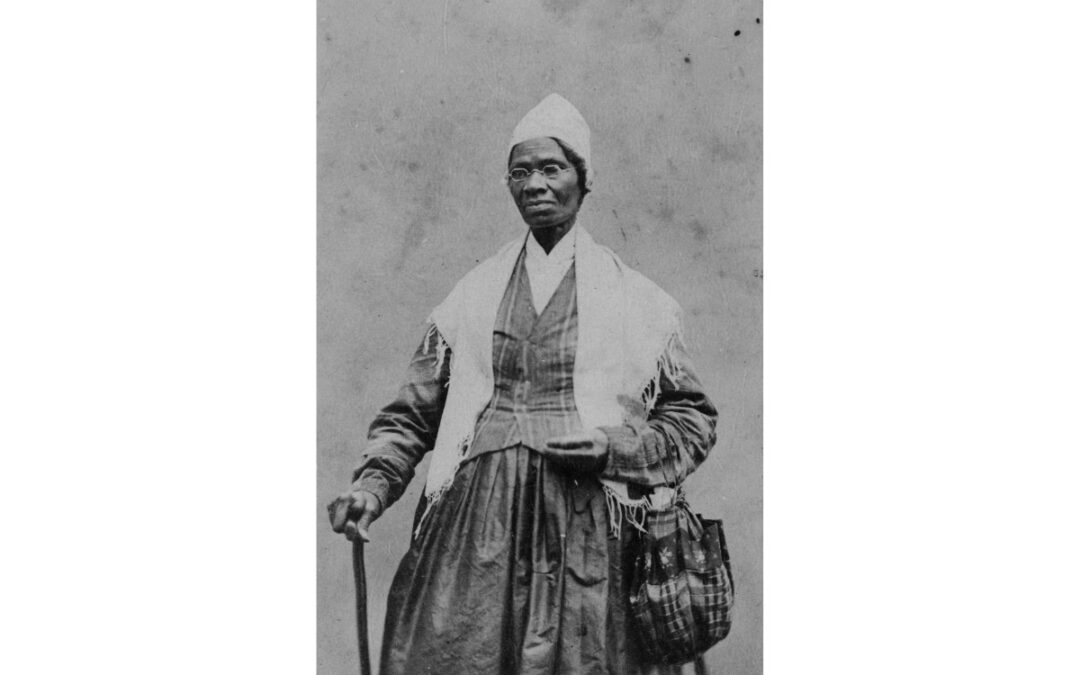
(Source: Michigan History Center mural)
A look into Michigan’s Indigenous history.
We’re kicking off this article by recognizing that Indigenous Peoples’ Day took place this week on Oct. 9. It’s a great opportunity to honor the culture and history of the original people who have long called this land home.
On that note, this edition of That One Time in Michigan begins with “Anishinaabe,” a name that has many meanings that all lead to one big idea: the original people.
Though they’re only touching the very surface of Indigenous history in Michigan, I still hope you enjoy the stories below.
Anishinaabe? Anishinabek? Nishnaabe?
If you’re not part of the Anishinaabe culture, you’ve likely heard the name—or a version of it. It encompasses several tribes living in the Great Lakes area whose members speak one of the Algonquian languages.
The tribes include the Algonquin, Mississaugas, Nipissing, Odawa, Ojibwe, and Potawatomi peoples.
Anishinaabe is usually pronounced like this: uh-NISH-ih-NAH-bay. According to the nonprofit organization Native Languages of the Americas, other spellings include Neshnabé, Anishinabe, Anishnabe, Anishnaabe, Nishnaabe, Nishnabe, Nishnawbe, Anishnawbe, and Anicinabe. “When the names end in -g or -k, those are plural forms (Anishinaabeg, Anishinabeg, Anishinabek, Anishinaabek, Anishnabek, Neshnabék, Anishnabeg, etc.).”
The reason there are multiple spellings and pronunciations of Anishinaabe is that the different Anishinaabe tribes speak different languages and dialects, and therefore spell it differently.
The Anishinaabe collective represents the largest tribes in our region.
More: See a map of all of Michigan’s federally recognized Indian tribes here!
Year 796 C.E.: The Three Fires
Long before Europeans began arriving in Michigan in the 1600s, Indigenous people had already called this area home.
Historians estimate that more than 100,000 Native Americans were living in this region when French explorers reached Michigan in the late 17th century. Of those, about 15,000 lived in the Mitten.
Several tribes lived throughout the state, but three—all part of the Anishinaabe culture—were the largest: The Ojibwe, the Odawa, and the Potawatomi. In around 796 CE, these three tribes formed an alliance known as the People of the Three Fires, the Three Fires Confederacy, or the Council of the Three Fires. Today—1,227 years later—the Three Fires still remain allied.
Each tribe played (and still plays) a different role in the alliance:
- The Ojibwe (Chippewa): The keepers of medicine and faith. The Ojibwe are also entrusted with the tribes’ sacred scrolls and teachings.
- The Odawa (Ottawa): The keepers of the trade. The Odawa are responsible for providing food and goods to the Three Fires, and in the past, they conducted large hunting and trading expeditions, developed inter-tribal and European alliances, and have been known as warriors and protectors of the Three Fires’ network.
- The Potawatomi (Bodéwadmi): The keepers of the fire. The Potawatomi are responsible for protecting the foundation of the council fire, the culture of its peoples, and lighting the path forward.
Further reading: What are the four directions?
Dodems
The Anishinaabe people use animals, plants, and other living beings to represent the roles within their communities. They’re called dodems, or “the core of a person.” There are seven original dodems: Crane, loon, bear, fish, marten, bird, and deer. The following is an excerpt from the Sault Ste. Marie Tribe of Chippewa Indians’ website:
“Cranes and loons are leaders, playing two different roles. Bear are police and healers. Fish are intellectuals and mediators. Marten are warriors. Deer are poets and peacemakers. Birds are spiritual people.”
Tribal elders and healers are responsible for helping members discover their dodem.
The Seven Grandfathers
Across many Indigenous communities, the idea of the Seven Grandfathers helps guide moral and ethical decisions. The following is an excerpt from the tribal advocacy group Uniting Three Fires Against Violence:
- Dbaadendiziwin (humility) 🐺
Humility is represented by the wolf. Respect your place and carry your pride with your people and praise the accomplishments of all. Do not become arrogant and self-important. - Aakwa’ode’ewin (bravery) 🐻
Bravery is represented by the bear. The bear shows us how to live a balanced life with rest, survival, and play. Find your inner strength to face the difficulties of life and the courage to be yourself. Defend what you believe in and what is right for your community, family, and self. Make positive choices and have conviction in your decisions. Face your fears to allow yourself to live your life. - Gwekwaadziwin (honesty) 🐦⬛
Honesty is represented by either the raven or the sabe. They both understand who they are and how to walk in their life. To walk through life with integrity is to know honesty. Be honest with yourself. Recognize and accept who you are. Accept and use the gifts you have been given. - Nbwaakaawin (wisdom) 🦫
The beaver represents wisdom because he uses his natural gift wisely for his survival. The beaver also alters his environment in an environmentally friendly and sustainable way for the benefit of his family. Continuously observe the life of all things around you. Listen with clarity and a sound mind. Respect your own limitations and those of all of your surroundings. Allow yourself to learn and live by your wisdom. - Debwewin (truth) 🐢
Truth is represented by the turtle as he was here during the creation of Earth and carries the teachings of life on his back. The turtle lives life in a slow and meticulous manner because he understands the importance of both the journey and the destination. Truth is to know all of these things. Understand your place in this life and apply that understanding in the way that you walk. Be true to yourself and all other things. - Mnaadendimowin (respect) 🦬
Respect is represented by the buffalo. The buffalo gives every part of his being to sustain the human way of living, not because he is of less value, but because he respects the balance and needs of others. Do not waste and be mindful of the balance of all living things. Share and give away what you do not need. Treat others the way you would like to be treated. Do not be hurtful to yourself or others. - Zaagidwin (love) 🦅
The eagle represents love because he has the strength to carry all the teachings. The eagle has the ability to fly highest and closest to the creator and also has the sight to see all the ways of being from great distances. The eagle’s teaching of love can be found in the core of all teachings, therefore an eagle feather is considered the highest honor and a sacred gift.
Michilimackinac

Arch Rock on Mackinac Island (Photo via Lori Stevens on Unsplash)
There’s a particular island in Michigan that holds incredible importance to the Three Fires: Michilimackinac, a name that means Big Turtle to the Odawa. It was the preferred meeting place for the Three Fires. Along with convening with one another, the Three Fires also met with other Anishinaabe nations there.
If you haven’t guessed by now, this place is also known as Mackinac Island. To the Odawa, Michilimackinac is considered the birthplace and center of the world. All across the island there are places of great significance to the tribes of the Anishinaabe—like Arch Rock (seen in the photo above), which is considered a bridge from the Earth to the afterlife.
The Three Fires today…and tomorrow
The people of the Three Fires continue many of their centuries-old traditions and responsibilities today, including fishing as a way of life. In Northern Michigan, for example, members of the Grand Traverse Band of Ottawa and Chippewa Indians have worked diligently to preserve Michigan’s nature and natural resources.
As we know, all over the US, Native regions were stolen by European settlers. Even in Michigan, tribal land was taken away by conflicts, including a war between the French and English and the American Revolution—as well as the establishment of Michigan as a state in 1837.
We may think that such behavior is in our past, but the reality is that the mistreatment of our country’s original people continues. Take, for example, the violence committed against Native American women:
- Murder is the third-leading cause of death for Native women.
- One in three Native American women will be raped in their lifetimes.
- 67% of reported rapes suffered by Native women are committed by non-Natives.
- 86% of all reported sex crimes against Native women are committed by non-Natives.
- 80% of sex crimes on reservations are committed by non-Natives.
- In the US, Native women are 10 times more likely to be murdered than non-Natives.
Sources: The US Department of Justice, the US Bureau of Indian Affairs
Here in Michigan, awareness campaigns and efforts to end the cycle of missing and murdered Native people are spreading. (Put it on your calendar: May 5 is Michigan’s Missing & Murdered Indigenous Women and Indigenous Relatives Awareness Day.)
Social action and equity programs are building, and state lawmakers are working with the Anishinaabek Caucus to promote Native concerns.
Michigan tribal leaders have also been making strides in bringing Native past, present, and future to the forefront—like a new curriculum about the history of Indigenous Peoples in Michigan for our public schools, sharing lessons and heartbreak from Michigan’s Indian Boarding Schools, developing economic resiliency, land management, and other leadership skills in its members, creating opportunities to learn and preserve Anishinaabe language and culture, and offering social programs, hotlines, and healthcare—including mental health, chronic disease, and maternal and early childhood services.
Here are some efforts being taken to reclaim Indigenous history in Michigan.
If you’re curious to learn more, the Michigan History Center in Lansing is a great place to start.
Keep Reading:
- A brief history of Native Americans in Grand Rapids
- Notable Native Americans in Michigan
- Michigan’s Native-Named Cities
- Anishinaabe Moon Cycle: 13 Moons
- Watch: 6 Misconceptions About Native American People
- Michigan Indigenous food & language cookbook for the non-Indigenous
- The stories of Sleeping Bear Dunes
Know the Land You’re On:
- Interactive Map: The Indigenous places, languages, and treaties from where you are
- What’s a Land Acknowledgement? A Guide
Visit & Research:
- MSU’s Michigan Native American Research Guide
- Menominee Range Historical Museum, Iron Mountain
- Museum of Ojibwa Culture & Gift Shop, St. Ignace
- Potawatomi Heritage Center, Wilson
- Tower of History, Sault Ste. Marie
- The Straits Cultural Center, St. Ignace
- The Mackinac Island Native American Museum at the Biddle House, Mackinac Island
- The Eyaawing Museum and Cultural Center, Peshawbestown
- Dennos Museum Center, Traverse City
- Ziibiwing Center of Anishinabe Culture and Lifeways, Mount Pleasant
- Grand Rapids Public Museum, Grand Rapids
- Nokomis Cultural Heritage Center, Okemos

A historian explores Michigan’s secret bootlegging empire
While we all know that crime doesn't pay, the bootleggers and gangsters of a century ago have always held a certain glamour in popular imagination....

That one time in Michigan: When we established one of the most isolated national parks
A quick history of Isle Royale National Park. It's been nearly 100 years since Congress authorized one of the country's most beautiful and remote...

That one time in Michigan: When an abolitionist called Battle Creek home
Did you know that one of the most famous abolitionists in US history called Michigan home? Sojourner Truth, the legendary activist, lived in...

Black History Month explained: Its origins, celebrations and myths
By HAYA PANJWANI Associated Press WASHINGTON (AP) — Beginning Feb. 1, schools, museums and communities across the nation will mark the start of...

Unpacking Detroit’s strong ties to the Mafia
Many crime families and mafia members have called Detroit home over the years. Learn about the Motor City’s mafia connections and ties to organized...







